 Gnostic Anthropology
Gnostic Anthropology  Popol Vuh - The Sacred Book of The Mayas
Popol Vuh - The Sacred Book of The Mayas
Popol Vuh - The Sacred Book of The Mayas |

|

|
| Written by Editor VOPUS | |
|
The Popol Vuh (K'iche' for "Council Book" or "Book of the Community"; Popol Wu'uj in modern spelling; is a book written in the Classical Quiché language containing mythological narratives and a genealogy of the rulers of the Post-Classic Quiché Maya kingdom of highland Guatemala. 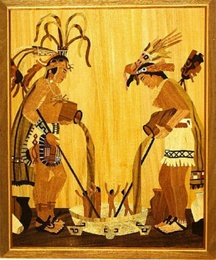
The book contains a creation myth followed by mythological stories of two Hero Twins: Hunahpu (Modern K'iche': Junajpu) and Xbalanque (Modern K'iche': Xb‘alanke). The second part of the book deals with details of the foundation and history of the Quiché kingdom, tying in the royal family with the legendary gods in order to assert rule by divine right. The book is written in the Latin alphabet, but it is thought to have been based on an original Maya codex in the Mayan hieroglyphic script. The original manuscript which was written around 1550 has been lost, but a copy of another handwritten copy made by the Friar Francisco Ximénez in the early 18th century exists today in the Newberry Library in Chicago. From Ximénez, who rated "all these accounts as children's tales" (Fr. Francisco Ximénez, Las Historias del Origen de los Indios de esta Provincia de Guatemala, 1857) down to Imbelloni, the most substantial part of Quiché mythology has remained hidden. This shows a failure both to penetrate deeply into the Indian's mentality and to comprehend the essence of his religious conceptions, and therefore of his culture. 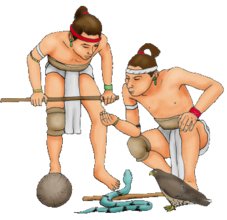
The fact is that these "puerile" legends, transmitted orally from time immemorial, contain the whole evolutive process of Quiché-Maya culture, its religion, society, and economy. They are an epitome of religious laws or articles of faith that are still in force and which were given to man by Deity before the Old World had the Hammurabi Code. Hunahpú -- the civilizing hero of Quiché-Maya culture -- is a redemptor-god, son of the Supreme Being. He is born immaculately like all the great religious founders and sacrifices himself for humanity, many centuries before the towering figure of Jesus the Christ becomes outlined in the panorama of human history. Hunahpú proclaims the tenet of the soul's immortality before Plato taught his doctrines, when the Greek mythology created by Homer and Hesiod did not yet exist. Hunahpú and Ixbalamqué transform themselves into human beings, have the same substance and experience the same life that man does, in order to establish the latter's patterns of conduct. 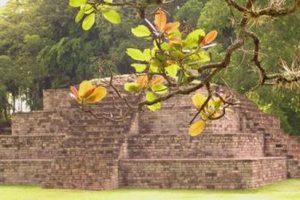
Before Heraclitus, the Quiché-Maya had the concept that men are mortal gods and gods immortal men, with the difference that among the latter, man, on dying, was transformed into an immortal being provided that he had complied with the precepts of religious ethics. The corollary to this idea is the conception of a harmonious world system and a relation between man and Deity and cosmos so close that perhaps no other religion equals it in this respect. With his own example, Hunahpú establishes the rules for worship and for the cultivation of the fields and lays down astronomical, ritual, and time-reckoning procedures inseparable from those rules. He also provides the standards of natural law and ethics contained in religious morality of a utilitarian character, based on the conservation of the individual, family, and society, and the principle of authority and economic security for the well-being of humanity. Hunahpú exemplifies the kind of ethical action which characterizes the ideal human type. 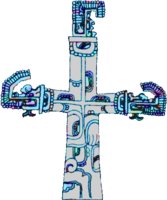
In the Popol Vuh are resolved those spiritual anxieties which have in every age troubled the human soul: the creation of the universe, the divine functions, the relation between Deity and man, the problem of the human condition itself, of duty and truth, virtue and sin, the origin of beings and things, of life, death, and human destiny, the causative laws of phenomena, etc. The Maya religion, which is one of salvation, has as its ultimate goal the development of inner tranquillity of soul within a harmonious social order wherein injustice cannot prevail, leading man to a happy afterlife, one merited through virtue, in conformity with the divine teaching exemplified by Hunahpú in one of those hitherto uncomprehended episodes of the famous Quiché codex. The authenticity of this masterwork of Mayan thought has long been accepted by authors such as Brinton, Müller, Raynaud, Rodas, Villacorta, Recinos, and others who have shown that even though it was written during the Colonial era it is completely native and foreign to Western thought. But there is even more than that: the Popol Vuh is a document of retrospective history, unique among human annals. Its mythology, theogony, and cosmogony are projected on a historic background that faithfully registers the events which took place in different epochs or racial cycles, and describe the particular features of those periods, even where many of them were not known or had undergone modifications by the time the codex was written. 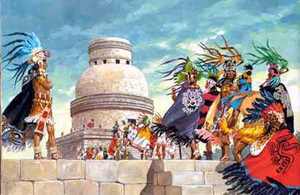
The veracity of the facts set out in the Popol Vuh is susceptible to many kinds of proof, thanks to comparative ethnology and archaeology on the one hand and, on the other, to the traditions and written sources of American peoples who, separated from the same cultural trunk in different epochs, conserve in distinct degree the features corresponding to the successive eras through which Quiché-Maya culture has evolved. Without leaving Maya territory, in Honduras we find a coexistence in the same country and the same moment of time of indigenous tribes belonging to the historic period (Chortís) and to the prehistoric (Sumos), according to the classifications of the Popol Vuh, while others (Hicaques and Payas) hold intermediate positions. This process of cultural differentiation is repeated when the Quiché branch itself divides off from the Maya, evolving from then on in a parallel but independent manner. Starting from the Quiché-Maya separation, the Popol Vuh relates episodes that belong exclusively to Quiché history and do not concern the Maya. On the other hand, the sources and traditions of the latter record cultural advances in which the Quichés did not participate, such as the extraordinary and unique development in astronomy and time-reckoning, about which the Books of Chilam Balam and the Chortí tradition of the Dance of the Giants inform us. 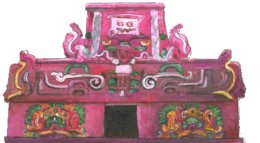
The Popol Vuh is divided into two parts. The first contains, besides the myths referring to creation of the universe, the history of the Mayas and Quichés up to their separation. The second part is concerned solely with the Quichés. In human history, as in that of nature, there are no abrupt changes; but as time passes, one notes the different phases that elapse and join during a culture's formative process. Then artificial divisions are established for the identification of those phases, making an abstraction of the transition periods between some and others. 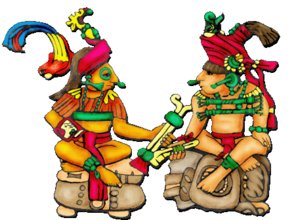
This is the method employed by the authors of the Popol Vuh in their synthesis of history, showing that the traditions were faithfully transmitted from generation to generation and formulated after the events referred to. The important thing is that those events of the prehistoric epoch in which the deep roots of Maya and Quiché cultures are to be found, should not have been forgotten and should have come down to us, thanks to the extremely conservative character of the native and his form of government. The anonymous elder-chiefs, representatives and interpreters of divine laws and conservers of tradition, have in fact succeeded one another without a break, transmitting from one to another the cultural legacy just as this still occurs within the Chortí caste of elders. Thus they appear in the course of history as a single personality that perdures in their successors and repeats without alteration those ethical fables that continue to serve as models for conduct among today's Indians. 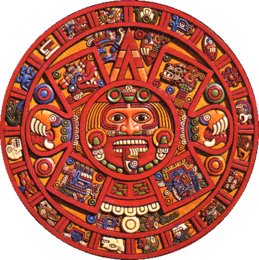
The classification in the Popol Vuh embraces four cultural horizons, three prehistoric and one historic. They correspond to the four Ages or Suns of Toltec mythology, and in both of these cultures -- which stem from a common trunk -- this historic synopsis is linked with sections of the calendar governed by "Regents," in accordance with the method by which Mayas and Toltecs recorded outstanding facts of their history in the very substance of their chronology and its change of calendric bearers. The significance of the book is enormous since it is one of a small number of early Mesoamerican mythological texts. It is often considered the single most important piece of Mesoamerican literature. The mythology of the Quiché is believed to correspond quite closely to that of the Pre-Classic Maya, as depicted in the San Bartolo murals, and iconography from the Classic period often contains motifs that are interpretable as scenes from the Popol Vuh. Comments (0)
 Write comment
|
| < Atlas or Atlanteotl | Popol Vuh - The Sacred Book of The Mayas - Continued > |
|---|
| Science |
| Art |
| Philosophy |
| Mysticism/Religion |
| Barbelo: Gnosis Magazine |